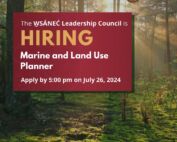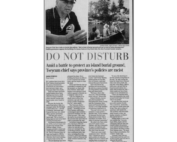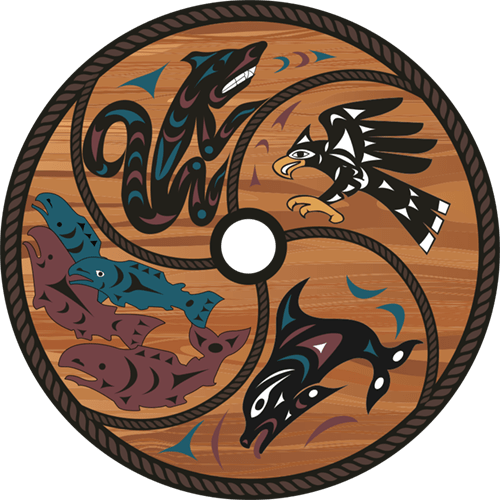
Chief threatens suit over road
Tseycum leader wants money and land for paved-over gravesites on scenic route in North Saanich. It’s all about respect, he says.
JUDITH LAVOIE
Times Colonist
The Tseycum First Nation is asking for money and land in exchange for allowing West Saanich Road traffic to continue running unimpeded through the North Saanich reserve.
West Saanich Road was built over Tseycum gravesites and the band hasn’t been properly compensated, said Tseycum Chief Vern Jacks.
The band is talking about suing the provincial government, or even digging up the road to rebury ancestors, he said.
Jacks has a thick, three-ring binder of letters documenting the band’s fight for compensation and says he’s fed up with lack of action.
“The province is accountable and we are tired of nice talk and letters coming from different ministers,” Jacks said.
The Douglas Treaties, signed by 19th century governor Sir James Douglas with southern Vancouver Island tribes, specify that all enclosed fields -areas such as cemeteries- are protected forever, a provision that was broken by construction of West Saanich Road, Jacks said.
“If they want to go to court, we will go to court. I think we will probably win because this is Douglas Treaty territory. Or, there is nothing stopping us bringing back our [reburied] ancestors and reburying them in the middle of West Saanich Road and saying it’s a heritage site,” he said.
“It’s all about respect. If I wanted to build a longhouse on white people’s graves, I would end up in jail, but look what happened to my ancestors.”
The story goes back to the turn of the century when West Saanich Road was constructed through the reserve. It then jumps to the 1950s when, with no First Nations consultation, that road was widened, disturbing graves.
Three years ago, North Saanich spent $400,000 on archeological services while working on a sewer line that ran through the gravesite. Some remains were removed and reburied in a new cemetery, at a cost to the band, while others were left under the road.
Indian and Northern Affairs Department records show the Tseycum received $1.2 million in compensation for the “graveyard and road” in November 2007.
However, Jacks said the province is also responsible and with a main reserve of only 29 hectares, the band needs more space for cemeteries and housing.
“And I’m sure the municipality would like to get their $400,000 back. I think that’s the province’s responsibility,” he said.
North Saanich council requested reimbursement from the province but was turned down.
The band wants the province to help buy two parcels of land, a 20-hectare parcel at the corner of West Saanich and Wain roads and a 10.5-hectare parcel at Victoria International Airport.
A letter this month from Julian Paine, aboriginal relations assistant deputy minister, to Jacks said the ministry will “continue to explore other viable land options on the Saanich Peninsula and the Gulf Islands to meet the longer-term needs of the Tseycum; First Nation.”
The ministry understands the need to bury ancestors with dignity, but its ability to “access funding sources is extremely constrained at this time,” the letter says.
Murray Coell, MLA for Saanich North and the Islands, said negotiations involve three levels of government.
“I think there are some solutions to be found,” he said.
“From my perspective, the first step is agreement that the road does go through the reserve and over what was a traditional burial ground and we need to find a way to compensate the Tseycum people.”
jlavoie@tc.canwest.com






